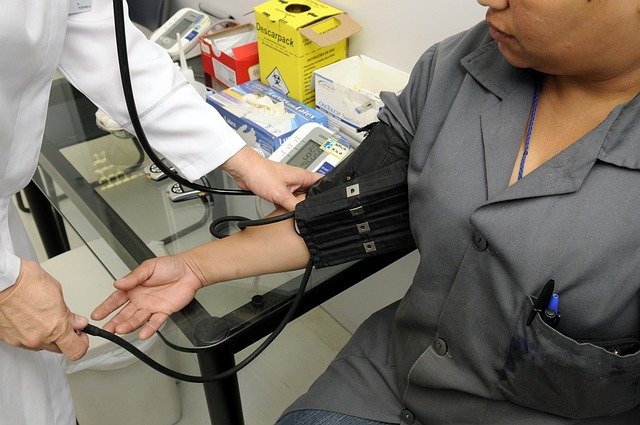Understanding the Role of Clinic Assistants in Healthcare: Insights and Growth Opportunities
Clinic assistants play a valuable role in supporting patient care by managing both administrative and clinical tasks across a range of healthcare settings. As healthcare systems grow more complex, the demand for skilled support staff continues to rise. This guide explores how the clinic assistant role is structured, common responsibilities in day-to-day operations, and how individuals often build experience to support both patients and practitioners. Discover how career paths in this field can evolve and what factors shape long-term opportunities in 2025 and beyond.

What are the primary responsibilities of a medical assistant?
Medical assistants are versatile professionals who perform a wide range of clinical and administrative tasks. Their duties may vary depending on the healthcare setting and specialty, but typically include:
-
Taking patient vital signs and medical histories
-
Assisting physicians during examinations and procedures
-
Preparing and administering medications as directed by physicians
-
Performing basic laboratory tests and collecting specimens
-
Scheduling appointments and maintaining patient records
-
Managing billing and insurance claims
-
Ensuring a clean and sterile environment in examination rooms
These responsibilities require a unique blend of medical knowledge, interpersonal skills, and attention to detail, making medical assistants invaluable members of the healthcare team.
How does one become a certified medical assistant?
Obtaining clinical support certification is a crucial step for aspiring medical assistants. While formal education is not always mandatory, many employers prefer candidates with proper training and certification. The process typically involves:
-
Completing a medical assistant training program: These programs are offered at community colleges, vocational schools, and some universities. They usually take 9-12 months to complete for a certificate or diploma, or 2 years for an associate degree.
-
Gaining hands-on experience: Many programs include an externship component, allowing students to apply their skills in real healthcare settings.
-
Passing a certification exam: Several organizations offer certification exams, such as the Certified Medical Assistant (CMA) exam from the American Association of Medical Assistants (AAMA) or the Registered Medical Assistant (RMA) exam from American Medical Technologists (AMT).
-
Maintaining certification: Continuing education is typically required to keep certifications current and stay up-to-date with advancements in healthcare.
What are the career prospects and medical assistant salary expectations?
The healthcare industry’s growth has created a strong demand for skilled medical assistants, leading to promising career prospects. According to the U.S. Bureau of Labor Statistics, employment of medical assistants is projected to grow 16% from 2021 to 2031, much faster than the average for all occupations.
Regarding medical assistant salary, several factors influence earning potential, including location, experience, and specialization. As of 2021, the median annual wage for medical assistants was $37,190. However, those in the top 10% earned more than $48,170 annually.
| Experience Level | Median Annual Salary |
|---|---|
| Entry-level | $30,780 |
| Mid-career | $37,190 |
| Experienced | $42,810 |
| Top earners | $48,170+ |
Prices, rates, or cost estimates mentioned in this article are based on the latest available information but may change over time. Independent research is advised before making financial decisions.
What are the potential healthcare career paths for medical assistants?
Medical assistant training provides a solid foundation for various healthcare career paths. With additional education and experience, medical assistants can advance to roles such as:
-
Medical Office Manager
-
Clinical Team Leader
-
Healthcare Administrator
-
Registered Nurse (with additional education)
-
Physician Assistant (with advanced degree)
-
Medical Records and Health Information Technician
-
Specialized Medical Assistant (e.g., in pediatrics, ophthalmology, or cardiology)
These career paths offer opportunities for professional growth, increased responsibilities, and potentially higher salaries. Many medical assistants find that their initial training serves as a stepping stone to more advanced positions in the healthcare field.
How does clinic assistant training prepare individuals for the healthcare industry?
Comprehensive clinic assistant training programs are designed to equip students with the skills and knowledge necessary to thrive in the healthcare industry. These programs typically cover:
-
Medical terminology and anatomy
-
Clinical procedures and laboratory techniques
-
Pharmacology and medication administration
-
Electronic health records management
-
Medical coding and billing
-
Patient communication and customer service skills
-
Medical law and ethics
By providing a blend of classroom instruction and hands-on practice, these training programs ensure that graduates are well-prepared to enter the workforce. Many programs also include internships or externships, allowing students to gain real-world experience and make valuable professional connections.
The role of clinic assistants in healthcare is both challenging and rewarding. As the healthcare landscape continues to evolve, the demand for skilled medical assistants is expected to grow, offering numerous opportunities for career advancement and personal fulfillment. By pursuing comprehensive training and certification, aspiring medical assistants can position themselves for success in this dynamic field, contributing to improved patient care and efficient healthcare delivery.
This article is for informational purposes only and should not be considered medical advice. Please consult a qualified healthcare professional for personalized guidance and treatment.




